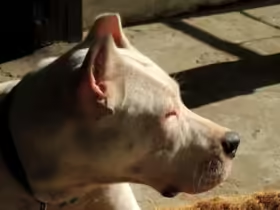Bringing plants into your home can enhance the atmosphere, improve air quality, and add a touch of nature to your living space. However, if you share your home with cats or dogs, it’s essential to choose plants that are safe for your furry friends. Many common houseplants can be toxic to pets, leading to health issues if ingested. In this guide, we’ll explore the best pet-friendly plants that are safe for cats and dogs, providing tips on how to create a green space that both you and your pets can enjoy.
1. Why Choose Pet-Friendly Plants?
Safety First
The primary reason to select pet-friendly plants is to ensure the safety and well-being of your pets. Some plants can cause vomiting, diarrhea, or more severe health issues if ingested.
Peace of Mind
Knowing that your plants are safe for your pets allows you to enjoy your greenery without worry. It also helps you create a more harmonious living environment for both pets and plants.
Aesthetic Appeal
Pet-friendly plants can still be stylish and beautiful, adding a touch of nature to your home without compromising on aesthetics.
2. Top Pet-Friendly Plants
Here’s a list of some of the best pet-friendly plants that are safe for both cats and dogs:
2.1. Spider Plant (Chlorophytum comosum)
Features:
- Air-purifying
- Easy to care for
- Long, arching leaves with small plantlets
Why It’s Safe: Spider plants are non-toxic and known for their air-purifying qualities. They thrive in indirect light and are perfect for hanging baskets or shelves.
2.2. Boston Fern (Nephrolepis exaltata)
Features:
- Lush, feathery fronds
- Ideal for low-light conditions
- Humidity-loving
Why It’s Safe: Boston ferns are safe for pets and help add moisture to the air. They do well in humid environments and require regular watering.
2.3. Areca Palm (Dypsis lutescens)
Features:
- Elegant, feathery leaves
- Thrives in bright, indirect light
- Adds a tropical feel
Why It’s Safe: Areca palms are non-toxic and a great way to bring a bit of the tropics indoors. They’re also known for their air-purifying properties.
2.4. Bamboo Palm (Chamaedorea seifrizii)
Features:
- Delicate, feathery foliage
- Prefers low to medium light
- Helps remove indoor pollutants
Why It’s Safe: Bamboo palms are safe for pets and add a touch of greenery to low-light spaces. They are also effective at improving indoor air quality.
2.5. Parlor Palm (Chamaedorea elegans)
Features:
- Compact size
- Tolerates low light conditions
- Elegant and easy to maintain
Why It’s Safe: Parlor palms are non-toxic to pets and suitable for smaller spaces. Their low maintenance requirements make them an excellent choice for busy households.
2.6. African Violet (Saintpaulia spp.)
Features:
- Vibrant flowers in various colors
- Prefers bright, indirect light
- Compact and easy to grow
Why It’s Safe: African violets are safe for pets and add a splash of color to your home. They thrive indoors and are relatively easy to care for.
2.7. Ponytail Palm (Beaucarnea recurvata)
Features:
- Unique bulbous base with long, arching leaves
- Thrives in bright light
- Drought-tolerant
Why It’s Safe: Ponytail palms are non-toxic and resilient, making them a great choice for busy or forgetful plant owners.
2.8. Cast Iron Plant (Aspidistra elatior)
Features:
- Tough and adaptable
- Tolerates low light and neglect
- Glossy, dark green leaves
Why It’s Safe: Cast iron plants are safe for pets and extremely low-maintenance, perfect for areas with less light and traffic.
2.9. Haworthia (Haworthia spp.)
Features:
- Small, rosette-shaped succulent
- Prefers bright, indirect light
- Requires minimal watering
Why It’s Safe: Haworthia plants are non-toxic and great for pet owners who want a low-maintenance, attractive succulent.
2.10. ZZ Plant (Zamioculcas zamiifolia)
Features:
- Glossy, dark green leaves
- Tolerates low light and drought
- Very low-maintenance
Why It’s Safe: ZZ plants are safe for pets and are perfect for those who may not have the greenest thumb. They add a touch of modern style to any space.
3. Tips for Maintaining a Pet-Friendly Plant Environment
3.1. Choose Non-Toxic Plants
Always verify the safety of plants before introducing them into your home. Stick to the pet-friendly varieties mentioned above.
3.2. Place Plants Strategically
Keep plants out of reach of curious pets, especially if they are prone to chewing or digging. Use hanging pots or high shelves to minimize access.
3.3. Use Pet-Safe Soil and Fertilizers
Ensure that any soil or fertilizers you use are non-toxic to pets. Some fertilizers can be harmful if ingested.
3.4. Monitor Pet Behavior
Watch your pets to see if they are showing unusual interest in plants. If you notice excessive chewing or nibbling, consider moving the plants to less accessible areas.
3.5. Regularly Check for Toxic Plants
Periodically review your plant collection to ensure all are still safe for pets, as your pet’s behavior and plant growth can change over time.
4. Alternatives to Consider
If you’re concerned about potential risks or your pet is particularly inclined to munch on plants, consider using artificial plants. Modern faux plants can provide the same aesthetic benefits without any risk to your pets.
5. Conclusion
Creating a pet-friendly home doesn’t mean you have to sacrifice the beauty of indoor plants. By choosing safe and suitable options, you can enjoy the benefits of greenery while ensuring the health and safety of your furry friends. With the right plants and a bit of care, you can create a vibrant, pet-safe environment that enhances both your home and your pets’ well-being.
Happy planting!











Leave a Reply